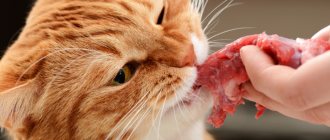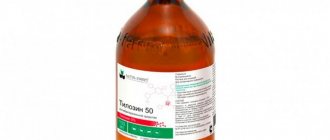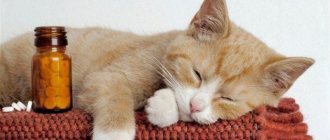Sooner or later, every owner is faced with the problem that the cat refuses to take the pill. But it is medications in this form that most often have to be used to treat pets. It is unlikely that the cat takes the drugs with pleasure: most likely, he, like most of his kind, tries with all his might to escape from your hands, scratches, bites, as soon as he sees you with a pill in your hands. Veterinarians have long dealt with this problem and have developed several methods for giving pills to cats.
When is the best time to give cats pills?
It is best to give medications to your cat before the first morning feeding. Be sure to read the instructions, as in some cases the manufacturer recommends giving them after meals. It also describes the best way to give the drug to a cat.
Early admission is considered the most correct. Because if given after feeding, there is a high probability that the cat will vomit. And then the tablet will come out back along with the food.
If you need to give the drug after meals, we advise you to wait a little, 40-50 minutes will be enough. This can reduce the likelihood of vomiting.
Put the pill in the cat's mouth
What devices can you use?
To speed up the cat's intake of tablet medications, veterinarians recommend using an introducer. The tablet dispenser greatly simplifies the process of consuming whole tablets, especially if the animal is aggressive. For medications that can be crushed, you can use a medical syringe without a needle. Crushed human medicines are mixed with liquid. They need to be pushed into the cheek part. If you don’t have any equipment, you can use the handle of a spoon or a coffee spoon, which, unlike a tea spoon, will not be too big for the cat’s mouth.
How to feed a tablet
- Place the cat on your lap, it is important that he lies with his back on your legs.
- With your left hand, grab his head; you need to tilt it back.
- Hold the pill with your right hand.
- Carefully open your mouth and place the tablet on the root of your tongue. The cat's swallowing reflex will work, and he will easily swallow it.
- Then you need to open your jaws and make sure that the tablet has been swallowed.
- At the end of the procedure, it is fashionable to give your furry one a drink of warm milk. Since the capsule can irritate the larynx, warm milk will be very helpful.
If your pet is prone to aggression, then you should wrap it in a blanket or towel. In this case, he will not have the opportunity to scratch you.
Ways to give pills
There are several options for giving your cat medications by mouth. You can feed, water, trick, force. You may have to try more than one method to achieve results.
Disguise
One of the easiest ways to give your cat a pill is to put it in tasty food. But at the same time hide it. Just a pill lying in a bowl will definitely not arouse the cat's interest.
However, often the cat eats the treat and spits out the tablet. Therefore, it is recommended to hide it in a small piece of meat (chicken, beef). A recess is made in the piece where the medicine is placed. It is advisable to feed before lunch. The pet swallows such “treats” without sensing a catch.
Store-bought camouflage products
Vet pharmacies and stores sell special products for masking medications:
- "Pill pockets." These are pieces of treats with a connector for a pill. They have different tastes that mask the smell of drugs. Made from meat, plant ingredients and flavored with natural flavors. The consistency of the pockets is like plasticine. Before feeding your cat a tablet, all you need to do is put it in the pocket and pinch the edge with your fingers. This method makes life easier for the owner and the cat.
- There are also pastes on sale that also mask medications. The paste is soft and stretchy, so it can be used to wrap a whole dragee of any size. And due to its pleasant taste, the cat will eat the tablet with pleasure.
- If you need to give a bitter drug, you can use gelatin capsules. Medicinal substances are placed inside the capsule. As a result, the unpleasant taste and smell disappear. Capsules are available in different sizes.
For sour cream lovers
In fact, it can be any other product with the consistency of sour cream that your pet likes.
- Grind the tablet into powder, mix with sour cream (pate).
- Place the cat on your lap. Stroke, calm.
- Apply the mixture to the animal's nose, but not too much.
- When the cat licks the sour cream, repeat the same steps.
The second option for giving a cat a pill is to dip the cat’s paw in a prepared mixture of medicine and something tasty. Animals are very clean and will immediately try to wash themselves.
Capsules with thick contents can be opened and the product can also be applied to the paw or nose.
Involuntary methods
If the pet understands that they want to force him to do something, he will try in every possible way to avoid it and hide. Therefore, when deciding to give medicine, you need to act confidently and quickly.
Method #1:
- Place the cat on a table or lap. It is preferable to place it on a table, since the smooth surface will prevent it from clinging to the claws.
- Cover your head with your hand. Use your thumb to press on the base of the jaw on one side, and your index finger on the other. If the cat does not open its mouth on its own, then with your other hand you need to lightly press on the lower teeth.
- Place the tablet in your mouth. Preferably at the root of the tongue.
- Cover your mouth and hold it so as not to open your jaw. But you should not cover your nose with your hand.
- Then stroke the throat from top to bottom, helping to swallow.
How to give medicine from a syringe
If you are wondering “how to give pills to cats that spit them out?”, then this method is definitely for you. For it you will need milk, a syringe and a spoon. Follow all steps in order:
- Using a teaspoon, crush the pill into a fine powder.
- Remove the plunger from the syringe and pour the powder inside the cylinder.
- Add some warm milk inside.
- Close the cylinder with your thumb and start shaking the milk until the powder is completely dissolved.
- Place your pet on your lap, open its mouth with one hand, and sprinkle the medicine with the other. Try to hit the palate, in which case the milk will go straight into the throat.
Giving medicine using a syringe
What worms can be found in kittens?
Unfortunately, no matter how much we would like to accept this fact, our pets, like any living creature, are also susceptible to all sorts of diseases. And, if a person, as a rational being, falls ill, he understands that he needs to follow a certain regimen and take medications.
The following types of worms can be found in kittens:
Cestodes: Cestodes are tapeworms that parasitize the intestines of cats. They cause diseases called “cestodiases”. They attach to the intestinal wall and damage the mucous membrane. Ulcers and tissue necrosis form at the attachment sites. In kittens, cestodes cause several diseases, the most common being dipylidia.
Dipylidiasis: the disease is caused by a cestode, which parasitizes the small intestine of kittens. The intermediate hosts of this parasite are fleas and lice eaters. Worm eggs are released in the feces of an infected pet. Fleas swallow eggs. A kitten becomes infected by biting off fleas infected with cestode larvae.
Sick kittens are exhausted, apathetic, they have a perverted appetite, alternating diarrhea and constipation. A sick pet's fur is disheveled and the eyes are leaking. He experiences itching in the anal area, so he constantly rides on his butt.
Toxocariasis and toxascariasis: Toxocariasis is most common in kittens aged two to three months. Toxascariasis mainly affects young cats and kittens aged six months and older. Kittens become infected with these diseases when they ingest worm eggs along with food or water.
In the stomach of the animal, a larva emerges from the eggs, which penetrates the intestinal mucosa, enters a blood vessel and, together with the blood, is transported to the heart, then to the lungs. In the lungs, the larvae grow and develop, then migrate to the bronchi and trachea, and from there, along with a cough, they enter the oral cavity.
The pet swallows them again, and the nematodes reach sexual maturity in the intestines. The full development cycle of these parasites lasts about a month. Kittens can also become infected with Toxocara when suckling milk from a sick mother.
Nematodes: Roundworms (nematodes) cause diseases called nematodes. These parasites are found primarily in the gastrointestinal tract, but can infect the lungs, heart, and other organs.
How to give your cat a pill without stress?
- Place the jelly beans on a cutting board.
- Using a knife, divide it into 2 parts, and then you still need to split the halves. The result should be 4 parts.
- Take a tablespoon, press your thumb into the indentation, and then crush the pill fragments into powder.
- The resulting powder must be dissolved in a small amount of water and then poured into a bowl. You must first wash the bowl with detergent.
- Give the cat something to eat, and after eating he will definitely drink. Therefore, the medicine will enter his body.
When to give your cat anthelmintics?
The main factor influencing how often to give your cat deworming tablets is the pet's lifestyle.
If your mustachioed pet often walks outside, then it is better to carry out preventive maintenance 4 times a year. Stay-at-home cats only need to be given a tablet once every six months.
The anthelmintic drug should be given on an empty stomach or 1.5-2 hours after eating. Since the animal may become slightly weaker after the procedure, treatment should begin no later than 2 weeks before the planned vaccination or mating.
Grind into powder and add to food
If your cat spits out pills, you can give him the drug this way. He is considered the most humane.
- Place a small amount of food in the cat's bowl.
- Grind the pill, pour the powder into a bowl.
- Mix the food thoroughly and give it to your pet.
If you need to give a capsule, then in this case things are much easier. Since you just need to open the capsule and mix the powder inside with food.
You can use canned cat food, minced meat or pate as food. Dry food is definitely not suitable for this method of medication administration.
What is important to consider when giving your pet medication?
There are different situations when cats have to be given medications in the form of tablets. The most common reason is the prevention of worms.
In addition, the veterinarian may prescribe antibiotics or drugs that regulate sexual activity for the furry patient.
Tablets are one of the means for regulating sexual desire
It is important to remember that any medications can be given to your pet only after consultation at a veterinary clinic, and you must strictly follow the instructions for use!
Before you begin treating your pet with any medication, ask your veterinarian how exactly the medication should be given. Some tablets can be crushed and mixed with water or food, while others must be given entirely as they must be absorbed gradually in the body to be effective. All details are described in the instructions for use, but it would be a good idea to clarify this issue with your veterinarian. Under no circumstances should you mix drugs with a gelatin shell or a very bitter taste with food. The rest can be crushed and mixed with a small amount of food so that the cat eats everything.
It is also possible in some cases to replace the tablets with another form of the drug, such as injections, suppositories or emulsion. For example, there is a huge selection of anthelmintic drugs: tablets, suspensions, drops. Means for controlling sexual desire are also varied, these are drops, suspensions, tablets, hormonal injections. Your veterinarian will advise you on the best remedy for your situation.
If there is no alternative to pills, then the cat owner will have to be patient and give medicine to his pet by cunning or force.
How to use the pill dispenser
The tablet dispenser is a plastic syringe with soft nozzles. It is suitable for different tablets and capsules. Here are detailed instructions on how to properly give a cat a pill using this device:
- Place the special tip on the end of the syringe.
- Take some water inside.
- Insert a tablet into the nozzle.
- Tilt the cat's head back.
- Open your pet's mouth and position the device so that the tablet is at the base of the tongue.
- Squeeze the piston, the tablet will fall out, and a little water will pour out, making it easier for the cat to swallow the pill.
It is important to do all the steps correctly, otherwise the medicine will get wet and its delivery will become significantly more difficult.
Method 5. Use a tablet dispenser
A special device - a tablet dispenser, or piller - will help make the task of swallowing medicine easier. In appearance and principle of operation, it resembles a syringe, but instead of a needle it has a long soft tube. To give a pill to a cat, simply insert the medicine into the tip of the tube, open the animal's mouth, and then press the plunger. Under the influence of air, the drug will reach its destination.
Note: such a device is sold at a veterinary pharmacy or pet store. However, you can make it yourself by cutting off the bottom of a plastic syringe of the required diameter.
We use a tablet dispenser
A very obedient cat who loves pills
Precautionary measures
Real disaster can happen if you don't take precautions. Here are the basic safety rules you should follow:
- It is better to carry out the admission procedure together; call your loved ones or friends for help. One person will hold the purr, and the second will give the drug.
- Try to compress the entire process as much as possible in time. After all, the longer you torment your pet, the more aggression she will accumulate.
- We advise you to prepare the remedy away from the eyes of the purr, otherwise she will sense something is wrong and hide from you as far as possible.
- If you do the whole procedure alone, it is important to secure the paws with claws in a towel. This way, your pet will not have the opportunity to harm you.
The damage that worms cause to a cat's body
Worms living in the body of a pet harm it in different ways:
- worms feed on the blood, tissues and lymph of their host;
- helminths produce substances that lead to intoxication of the cat’s body;
- when the parasite dies, its decomposition products also poison your pet’s body;
- The suckers with which worms attach to organs can damage the mucous membranes of internal organs. This may lead to internal bleeding.
While there are few parasites, the animal may not notice their presence in its body.
But a large number of worms can significantly deplete the body. And a constant increase in the number of helminths will sooner or later lead to the death of the cat.
What to do if it scratches and bites?
When your cat shows strong resistance, you cannot do without help. Ask someone close to you to hold your pet's paws.
If even these don’t help, then take a large towel and wrap the fluffy like a child.
It is important to leave only the muzzle, do not over-tighten it so that it does not choke him. If your pet is pregnant, then this option can be harmful, so you should avoid using a towel. Table comparing different methods
| pros | Minuses | Risks | |
| Stick it in your mouth | Fast way | May not swallow | May bite or scratch |
| Dissolve in water | No painful way | Not all tablets can be dissolved. time needs to be spent. | |
| Give via syringe | Quite a simple way | You must have a syringe on hand | May bite or scratch |
| Grind into powder | The easy way | If you add food, he may refuse and will not eat | |
| Add to food | The easy way | May refuse to eat | |
| Using a tablet dispenser | Must be purchased | May bite or scratch |
Read the instructions or ask your veterinarian
Before proceeding with the main part of the procedure, you should carefully read the instructions for the drug or ask your veterinarian the following questions:
- Is it possible to mix tablets with water?
- Is it permissible to grind the product into powder;
- Will it be possible to dissolve the tablet in water?
- Is it possible to add the drug to fatty foods, for example, meat, sour cream or milk;
- If the product is in liquid form, does it lose its properties if it is diluted a little with water?
Recommendations from veterinarians
Taking medications is in any case stressful for four-legged pets. Therefore, many owners remember previous illnesses with fear, because cats actively show aggression and categorically refuse medications. However, veterinarians give owners the necessary advice that will help greatly simplify this procedure.
- Do not yell at your pet under any circumstances, as this will not make the process any easier. The fact is that animals do not understand human language, and he will not understand you anyway; from such actions he will only experience even more stress.
- Taking pills out of the package in the presence of a cat is not the best thing to do. After all, cats remember the actions of their owner, and they can remember that the last time he was severely tormented after this. Therefore, he will try to hide from you better.
- Cases of injury cannot be excluded, because your cat may bite or scratch you. Therefore, we recommend that you keep a piece of cotton wool soaked in hydrogen peroxide at the ready.
- If you need to regularly give tablets to your pets, then try to do it confidently and quickly. Then the cat will get used to such procedures, and each time he will react calmer.
- If you can’t persuade your cat to take a vitamin, then you should talk to your veterinarian. After all, you can simply choose a different way of taking medications. After all, they can be produced in the form of pastes, suspensions or solution for injection.
- Remember that your pet's comfort is important, so we recommend placing your pet on a table. For comfort, you should lay a soft blanket on it.
Getting a cat to take medicine is not that easy in reality. If you read the article carefully, then you know how to give a pill to a cat if he spits it out. Whatever method you choose, the main thing is calm and self-confidence. The cat will sense your mood and will resist less. Good health to you and your pet!
Don't forget to leave a comment which method worked for you?
Emotional mood or how to tame a cat
A cat that feels threatened chooses different behavioral tactics:
- Scratch, bite, resist.
- Pretend to be dead or sick.
- Try to run and hide in a distant place, inaccessible to humans.
The owner at this moment needs to be calm and confident. All manipulations of administering medications cause stress in the animal. In addition, it senses the person’s mood. There is no need to shout or scold the ward. The pet must understand that its owner is in charge in the situation. Therefore, breeders recommend that you immediately take a dominant position, sitting on your knees above the cat and carry out manipulations.
When deworming is not recommended
Prevention of worms is a mandatory measure for all responsible owners. But there are situations when medications can harm a pet. Deworming tablets are not recommended for use in the following cases:
- the cat is pregnant or feeding kittens with her milk;
- The kitten is less than 3 weeks old.
During these periods, the animal’s body is weakened, and the medicine can have a toxic effect. A possible exception is a pregnant cat with obvious signs of severe parasite infestation (lack of appetite, worms in the feces). In lactating animals, treatment for worms can be carried out no earlier than 6 weeks after birth.
Which remedy is best for an obstinate animal?
Any veterinary pharmacy offers a variety of anthelmintic drugs. For calm animals, regular anti-worm medications are also suitable. And especially for obstinate cats, manufacturers have developed special medications:
- meat-flavored tablets (Drontal);
- suspensions (Prasicide);
- pastes (Dirofen);
- sugar cubes (Polyvercan);
- drops on the withers (Profender).
These drugs are much easier to give than regular tablets. The suspension is poured in using a dispenser syringe, and the paste can be spread on the paws and wait until the cat licks off all the preparation.
Meat-flavored deworming medications are an excellent alternative for pets with character. Their pleasant aroma will attract the cat, and she will eat the entire dose.











